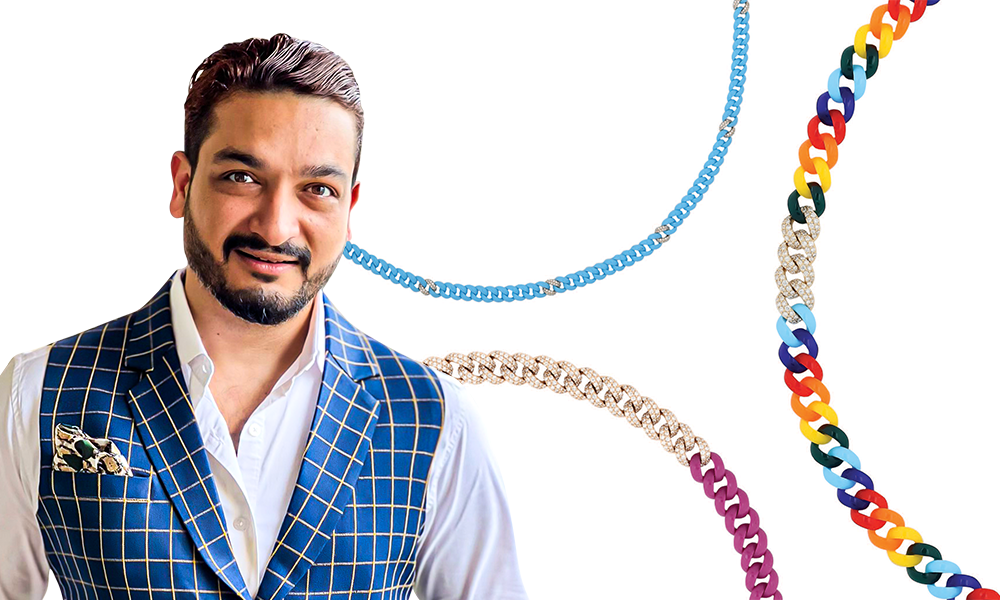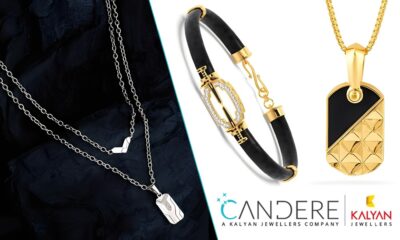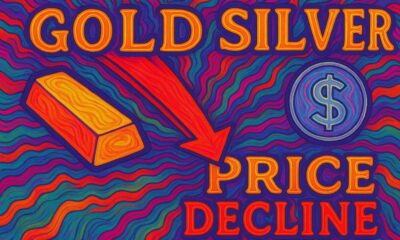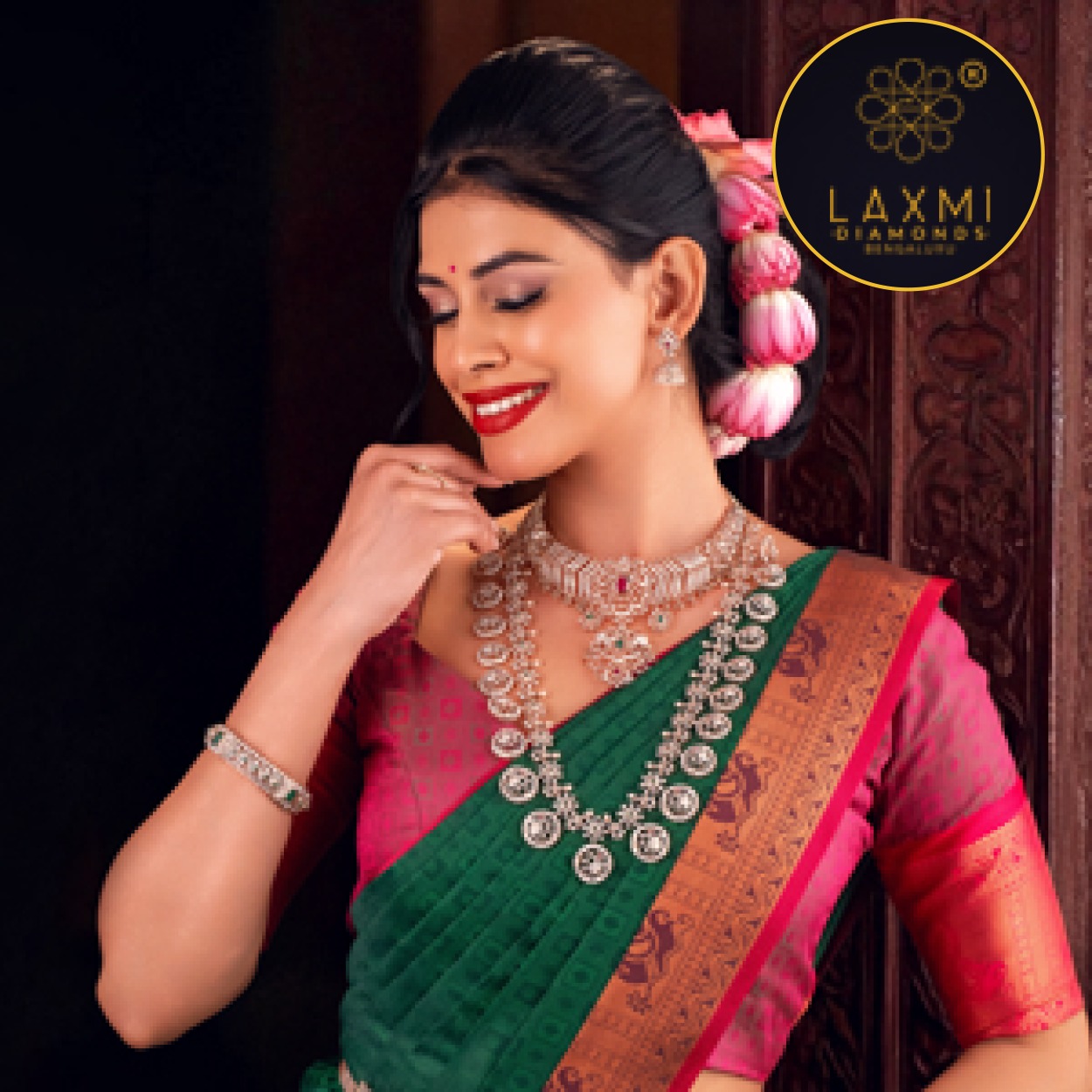By Invitation
Unveiling the allure of mixed materials in diamond jewellery
By Akash Talesara,Vice President: Asian Star Group.

One of the strongest trends to emerge from the jewellery showrooms taking over was mixed metals, with several prominent independent designers showing two-tone pieces created using both gold and silver-toned precious metals. Mixed metal chains were particularly strong, with yellow gold feature links on chunky silver chain and even complex two-tone link

The art of mixing materials: enhancing diamond jewellery with metal
In the realm of jewellery design, the fusion of materials has long been a hallmark of innovation and style. One of the most captivating combinations in this domain is the marriage of diamonds with various metals. This blend not only enhances the aesthetic appeal of diamond jewellery but also introduces durability and versatility into each piece.
Unveiling the allure of mixed materials
Diamonds, with their unparalleled brilliance and timeless allure, have captivated hearts for centuries. When paired with metals such as gold, silver, platinum, or titanium, they undergo a transformative journey. The contrast between the dazzling sparkle of diamonds and the lustrous sheen of metals creates a harmonious balance that appeals to both traditionalists and modernists alike.

Crafting Masterpieces: The role of mixed materials
The use of mixed materials in diamond jewellery opens up a world of creative possibilities for artisans and designers. By combining diamonds with different metals, jewellery makers can achieve unique textures, colors, and patterns that elevate the overall design. For instance, a diamond ring set in rose gold exudes warmth and elegance, while platinum offers a sleek and contemporary appeal.

Versatility redefined
One of the significant advantages of using mixed materials in diamond jewellery lies in its versatility. Materials like Ceramic, steel, wood and even gemstones are the prominent material used these days to enhance the products especially as it gives a big value for money when the gold prices are so volatile. Whether crafting a delicate pendant, a bold bracelet, or an intricate pair of earrings, the choice of metal can significantly alter the look and feel of the piece. This adaptability allows jewellery enthusiasts to express their individuality and personal style through their accessories.
Durability and longevity
Beyond aesthetic appeal, the combination of diamonds with metals enhances the durability and longevity of jewellery. Metals like platinum and titanium are renowned for their strength and resilience, ensuring that diamond settings remain secure and pristine over time. This durability makes mixed-material diamond jewellery not only a symbol of beauty but also a testament to craftsmanship and quality.
Embracing innovation: Trends in mixed-material jewellery
As fashion trends evolve, so too does the use of mixed materials in diamond jewellery. Designers are increasingly experimenting with unconventional combinations, such as mixing diamonds with blackened metals or incorporating recycled materials for a sustainable touch. These innovations not only reflect current tastes but also pave the way for future trends in the jewellery industry.

The personal touch: Customization and individuality
One of the most compelling aspects of mixed-material diamond jewellery is its ability to be customized to suit individual preferences. Whether selecting a specific metal to complement skin tone or choosing a particular diamond cut to enhance sparkle, customization allows each piece to tell a unique story. This personalization adds an intimate dimension to jewellery, transforming it from a mere accessory into a cherished heirloom.

Conclusion
In conclusion, the integration of mixed materials with diamonds in jewellery design represents a harmonious blend of artistry, durability, and personal expression. From classic designs to avant-garde creations, the use of metals enhances the allure and versatility of diamond jewellery, making each piece a timeless treasure. As trends continue to evolve, one thing remains certain: the beauty of mixed-material diamond jewellery will continue to captivate and inspire for generations to come.
By Invitation
Professional Guidelines for Training Jewellery Retail Sales Staff
By Shivaram A, Founder – Retail Gurukul

Selling jewellery requires a distinct approach from other retail sectors. Customers in this environment anticipate a higher level of service and expertise than they might expect at a grocery or clothing store. To achieve success, staff must possess specialized skills tailored to jewellery sales. The following guide outlines key training principles for jewellery sales associates, complemented by practical examples for each area.
1. Appearance
• All employees should maintain impeccable grooming and attire.
• Example: Associates arrive in pressed shirts and polished shoes daily.
• Where possible, provide uniforms; otherwise, ensure personal clothing is clean, ironed, and understated.
• Example: Staff without uniforms wear plain, well-ironed garments, avoiding prominent logos.
• Hair must be neatly styled and footwear kept clean for all staff members.
• Example: Management conducts pre-shift checks to confirm proper grooming standards.
• Dress codes apply universally, including to security personnel.
• Example: Security staff participate in regular dress code reviews and grooming inspections.
2. Attitude
• Encourage staff to display consistent friendliness and positivity throughout the workday.
• Example: Every customer is welcomed with a genuine smile and warm greeting.
• Staff should maintain courteous engagement, even if customers do not reciprocate.
• Example: In cases where a customer appears upset, the associate still offers a friendly introduction and assistance.
• Staff are expected to compartmentalize personal issues during shifts, remaining constructive and solution-oriented.
• Example: Employees adopt a focused mindset before starting their shift to prioritise exemplary customer service.
3. Communication
• Employees must uphold polite, respectful dialogue at all times.
• Example: Use courteous phrases such as “May I assist you, Sir?” or “Thank you, Madam” consistently.
• Appropriate titles or respectful terms in local languages should be used when addressing clientele.
• Example: “Good afternoon, Sir. Is there something special you are searching for today?”
• Professional etiquette should permeate every interaction.
• Example: Regularly incorporating “please” and “thank you” in conversations.
• Indifference must be strictly avoided.
• Example: If an employee is occupied, they acknowledge waiting customers with assurances of prompt attention.
• Multilingual abilities are advantageous in serving a diverse customer base.
• Example: Staff transition to Hindi when necessary to make customers feel comfortable.
• Demonstrate extra patience and care with elderly patrons.
• Example: Spend time clearly outlining details for older customers who may require additional support.
• Engage children hospitably so adults can shop undistracted.
• Example: Offer small toys or converse briefly with children while adults browse.
• Ensure equal treatment for all visitors, irrespective of appearance or attire.
• Example: Give consistent attention to both casually and formally dressed customers.
4. Hospitality
• Begin interactions by welcoming guests and offering seating.
• Example: “Please have a seat while I present our newest collection.”
• Provide complimentary refreshments as a hospitality gesture.
• Example: Serve water or tea to customers as they view products.
• All team members should be prepared to assist customers, regardless of primary responsibilities.
• Example: If the primary salesperson is occupied, another employee steps in seamlessly.
• Owners should occasionally interact directly with clients to lead by example.
• Example: The owner personally thanks loyal customers for their continued patronage.
• Always offer proactive and attentive service.
• Example: Assist customers with carrying purchases or parking arrangements when needed.
5. Product Knowledge
• Deliver thorough training to ensure staff are knowledgeable about inventory.
• Example: Monthly training sessions update employees on new designs and materials.
• Define clear guidelines regarding which product details and certifications to share.
• Example: Staff are informed about certifications relevant to gold purity inquiries.
• Team members should confidently describe product features, fabrication methods, and distinctive qualities.
• Example: Discuss differences between handcrafted pieces and machine-made jewellery.
• Educating customers is integral to the sales role.
• Example: Clearly explain gemstone properties or style benefits to interested shoppers.
• Counter personnel must answer queries knowledgeably or direct customers to appropriate experts.
• Example: Junior associates promptly consult senior colleagues when complex questions arise.
• New hires should discreetly seek supervisory guidance rather than stating uncertainty.• Example: “Let me verify that information with my manager to provide you with an accurate response.”
-

 National News2 days ago
National News2 days agoCandere by Kalyan Jewellers – Stack Jewellery for Men: A Guide to Layering and Expression
-

 GlamBuzz1 hour ago
GlamBuzz1 hour agoBollywood Stars Dazzle in Festive Glamour
-

 International News48 minutes ago
International News48 minutes agoGold corrects 12% and Silver 15% in a week AUGMONT BULLION REPORT
-

 National News8 minutes ago
National News8 minutes agoGold, silver price decline continues, downward momentum may continue in the short term











